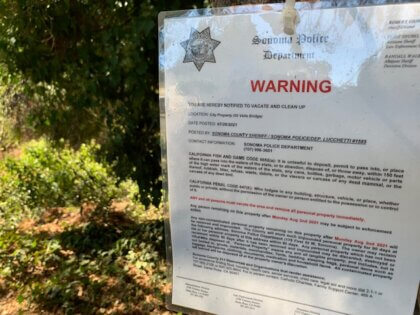Homelessness is not a new issue for the Sonoma Valley; indeed, there have been countless meetings both public and behind the scenes about how exactly to provide shelter, food and services to our unhoused and housing insecure residents in Sonoma and the surrounding areas, and how to do so in a way that protects both the health and dignity of the unsheltered, and our community. These are complicated issues for the County as a whole, as well as the state and nation.
There are many reasons people find themselves without a home, living in their cars, on spare couches or camping in the hills or along creeks. Fires, pandemic, mental health illnesses, PTSD, substance abuse, domestic violence, low wages and the enormously high cost of housing in our Valley and County all play a role in people suddenly finding themselves forced out of permanent housing. No one grows up wanting to live in the streets or hills.

I have heard from service providers and homeless advocates working with unhoused individuals and trying to meet their shelter needs, but who are unable to find adequate accommodations. I have heard from Valley residents with encampments on their land adjacent to the creek voicing exasperation about the continued need to clean up the debris using their private funds, and I have heard from housed Sonoma Valley residents, wondering whether the next small fire, some of which have begun in encampments in Montini Preserve, will come racing down the hill toward their homes.
Whatever the entry point to this issue, I know that we share a common goal: shelter and services for the unhoused that will help our housing insecure residents re-integrate safely in the community, benefiting them and the community, amidst this year of extreme drought, fire danger, and the pandemic.
In August, due to the fires started throughout the summer, those encamped in the Montini Preserve were given notice to leave the preserve given the significant safety risks for both the residents and the community at large. Residents were offered shelter space at COTS in Petaluma, or placed on waiting lists for other shelters in the County; the encampment ultimately cleared on September 1. While necessary, and while I am grateful to all the community partners who worked on this difficult issue, I have heard the constructive criticism from the community: many of our unhoused are from the Sonoma Valley, and need shelter solutions in their home community.
In Sonoma, our existing service provider, Sonoma Overnight Support has done amazing work, but it is no secret that they cannot singlehandedly solve this problem, particularly without a space to offer shelter. The Haven, the small shelter located near the police station on First Street East is now operating by SOS as a day service center with showers and washer/dryer and safe parking site for a limited few — but it is too small to operate as a barrier-free shelter, a requirement for county financial support. SOS also provides hundreds of meals each day at the Springs Community Hall on Highway 12.
Homeless Action Sonoma is proposing a site for shelter, transitional housing and job training at a site on Highway 12. They are working on fundraising and permitting for that shelter operation.
I believe there are solutions that can prioritize both individual and community health and safety. Los Guilicos Village is the closest shelter and is technically in Sonoma Valley (though rather far from the City of Sonoma), and I have worked with SOS to advocate for 15 of the pallet shelters at LG Village for Sonoma Valley residents. We have asked for space at LG Village for the Montini Preserve residents, but there is just not enough room for everyone at this time.
It may surprise some to learn, as of the last point-in-time census of the county’s homeless population conducted by the Community Development Commission in 2020, that the number of unhoused individuals in the Sonoma Valley has actually decreased, from 141 individuals in 2019 to 88 in 2020. However, given the timing of the survey, these numbers do not yet account for the disruption that was and still is the COVID-19 pandemic, many estimate the number of homeless and housing insecure folks in Sonoma Valley number closer to 200.
The pandemic, and its disproportionate impact on vulnerable populations including the unhoused, did present an opportunity to reconsider how we craft solutions at the county level. While we continued to observe the success of the pallet shelter model at Los Guilicos Village, we also were able to fund, with an infusion of state funding, the purchase of hotels in Santa Rosa and Sebastopol. Cities are beginning to address this issue with new solutions—the City of Santa Rosa and the City of Petaluma are both working towards expanding options for their unhoused populations. These latest projects emphasize the desirability of non-congregate shelter options as well as the power of collaboration across all levels of government.
At an August Board of Supervisors meeting, we received an update from David Kiff, Interim Director of the Community Development Commission, and Tina Rivera, Interim Director of Health Services, about where we’ve been and where we’re going. These department leaders and your Board of Supervisors expressed enthusiasm for an all-of-the-above kind of response. Safe parking, indoor-outdoor shelters, more Los Guilicos-style tiny home villages, RV communities, hotel conversions and other novel solutions are all on the table. Our unsheltered residents, both in Sonoma Valley and throughout the County, are diverse and have different needs, just like all of us do. I was inspired by what I heard presented by staff, stated by my colleagues, and shared by the community at this meeting, and I hope it represents a new beginning.
In September, the county’s Community Development Commission released a Notice of Funding Availability (NOFA) for $2 million allocated by the Board of Supervisors for the development of safe parking and indoor-outdoor shelter programs that accommodate a variety of needs for persons experiencing homelessness. The NOFA also specifies that these programs should provide extensive opportunities for persons experiencing homelessness to access wrap-around services that will assist residents in moving to more permanent housing opportunities. Responses to the NOFA must be received by October 8th.
Unfortunately, $2 million will not end homelessness in Sonoma County, but it is a start. You might ask, where do we go from here? On October 27, I will be hosting a Virtual Town Hall on homelessness in the Sonoma Valley to highlight what is happening now and to receive community input on where we are going. I look forward to hearing feedback from local leaders, service providers, and community members on both our existing work as well as their desires for future solutions. I think we will come to see that these solutions require not just funding, though that is very important, but partnerships, community understanding, and ultimately, trust. I think we can get there, and I hope this Town Hall can serve as an opportunity for fostering these bonds. Please stay tuned for more information to come.



Be First to Comment